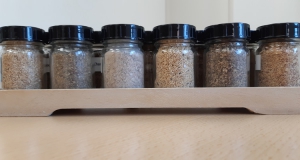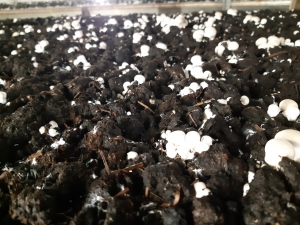Supplement, the unknown ingredient?
If a consultant is visiting a farm there are always many things to discuss in detail.
Shall we give more or less water and are we able to water over the mushrooms?
Do we need a slower or faster fructification?
Is the amount of pins sufficient or do we need more and how do we then get a decent stagger?
Even discussions about compost although many growers do not really know the details. But they know about structure, moisture and smell. Because this is what they discuss at filling.
The same about casing soil. Is it heavy this time or just fine? Wet or dry?
But talking about supplement one finds out that most of the growers have absolutely no idea how it works, what it really is and the choices they can make. Generally the price is the main buying point.
And this is strange to me. Because compost and casing are always changing during the year. This is mainly due to the seasonal effect on the raw materials. Straw is maturing in the storage, chicken manure will change in nitrogen level and peat is changing moisture depending on the season of the year. Manufacturing companies will react to that but smaller changes are inevitable.
To keep production at the same level or to enhance it, the supplement however can be changed to your liking. Most of the growers only know that there is a slow or normal release product. But it is possible to customise the supplement to the situation of that moment. Not just slow or fast but even pinpointed to a certain phase of the growing. To give an example: one of the farms I work on now wanted more activity in second flushes and a longer shelflife. In cooperation with the compost supplier and the supplement supplier they have now “composed” a supplement that can do that. Be aware though that it also needs adapting of the growing. You are putting more proteins into the compost so the activity changes too. This means that also the watering and the picking have to change.
But this way many combinations are possible.
There are different raw materials to mix and several processes to make the release time fitting your schedule.
A few remarks though have to be made.
It only works well in cooperation with the compost supplier. The ingredients of the supplement have to be an addition to the nutrients in the compost. So it has to fit the analyses of the compost.
The best way to use it if it can be mixed in at the compost yard. And this is only profitable with bigger quantities of compost. Mixing it in at filling is not as efficient as on the compost yard.
Do not just look at protein levels. Because some proteins are not available to the mushrooms and will still be in the compost at the moment of emptying the room.
So look at effective protein. This often is a matter of price. Good proteins come with a price.
And remember: good supplement makes good compost better. But good supplement makes bad compost worse.
And on the 7th day
An appropriate title for a blog written on Easter Monday.
Normally the 7th day is a day of rest. Good for people after a week of working but not always good if mushrooms take a rest. Read: they stop growing. This can happen during the fructification and if the reaction of the grower is too slow, the flush grows out to be too small.
Fructification is split into two sections. 4 to 5 days for making the mushrooms or forming the primordia. The second part is roughly from day 5 till the start of the first flush. During the first part RH, ambient temperature and CO2 are the main parameters to control the number of primordia. Compost temperature is for me not that important at that time. After day 5 the RH is lowered to let the primordia grow out to be mushrooms. The CO2 is dropped slowly and we also start dropping the temperature to reach 17.5° C ambient temperature at the start of the flush (my favourite temperature to work with).
On day 7 one can see mushrooms developing in the size of 2 to 5 millimetres. And then this phenomenon can occur. You look during your morning check and everything looks good. The next day, nothing has happened. General reaction is waiting. But if you look carefully, in most of the cases the room is not taking enough fresh air. CO2 is okay, RH is okay, air temperature is okay and the compost temperature is declining. If the minimum fresh air setting is too low, the room can have a lack of oxygen and mushrooms just stop developing. Simplest thing to do is to drop the CO2 setting to 800 ppm for a couple of hours. To avoid this however and the best way to handle this, is to make sure that the minimum fresh air setting is around 25%. Then the climate unit will always use enough fresh air and mushrooms keep growing. By the way, this happens mostly with strains which tend to give bigger mushrooms. Because they already tend to give fewer mushrooms.























